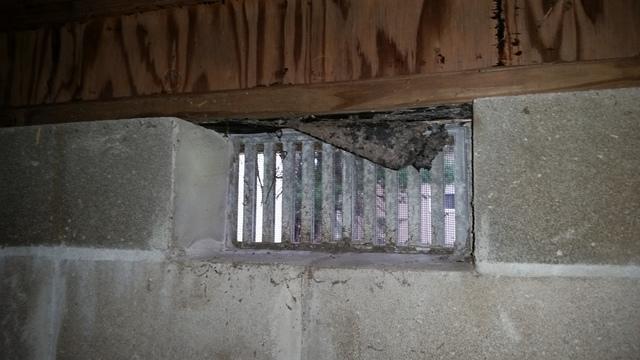Vented Crawl Space Leads to Mold in Belmar, NJ
Challenge
We were sent out to a home in Belmar, NJ that had mold growth in the crawl space. This crawl space had a chronic humidity problem that was caused by open vents and an open crawl space door. These openings allowed thick, humid outside air to enter (not to mention providing major areas of entry for insects and other pests). Once indoor humidity exceeds 50%, which is common in virtually all open, vented crawl spaces, mold can grow, and once humidity exceeds 60%, mold will thrive. This crawl space is a perfect example of what problems develop when basements and crawl spaces suffer from sustained high indoor humidity levels.
Solution
We equipped our Personal Protective Gear and treated every square inch of the crawl space with our EPA-registered antimicrobial solution called Mold Abatement Polymer Solution 1, or MAPS 1. This product attacks mold on a cellular level and kills it instantly. We then used our mold stain remover, scrubbed away all the excess mold staining, and then applied our patented sealant MAPS 2.
This application encapsulates the surface mold is growing on and renders it harmless and non-allergenic. MAPS 2 is also moisture-sensitive and will reactivate whenever it gets wet to prevent future mold growth.
Next, we sealed off the crawl space from the outdoor elements by blocking the vents and installed a commercial-grade dehumidifier to control the humidity levels. These dehumidifiers cost less to run than other dehumidifiers, cover over 3000 square feet, and are energy efficient. Dehumidification is, by far, the most important preventative measure that a homeowner can take to prevent mold growth in crawl spaces and basements caused by humidity and moisture build-up.








